

Legacy of Kain Soul Reaver 1 &2 Remastered was provided by Aspyr for review. Thank you!
Before heading into this review, I didn't actually know anything about the Legacy of Kain series other than seeing a couple of trailers here and there and hearing about it when it first launched over 20 years ago. Heck, I didn't even know what genre these games were. But as it turns out, these are actually pretty competent 3rd person action-adventure games, and I understand why they gained a cult following when they were first released. But how do they hold up now, 25 years later? Do the remasters do the games justice? Let's find out.
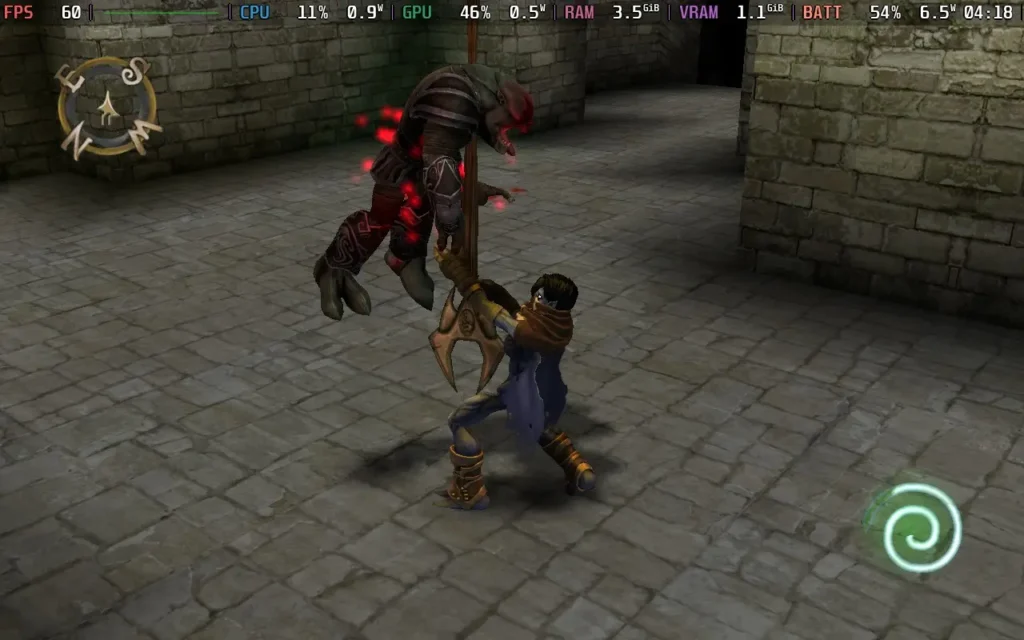
To start with, calling these games a "Remaster" might be a little generous. There are higher-resolution textures and slightly enhanced models throughout, with some improved lighting too, but overall, the game remains very similar. Essentially, it looks like a 1999 game got upgraded to a 2004 game. Visually, the games are not very impressive and still resemble PS2-era games.
The second game benefits even less from the visual upgrade, presumably because it's newer, and the textures were already slightly higher quality than the first game. However, some textures are not upgraded at all in the second game, and others just have a mild uplift in resolution. The models are a better upgrade than the textures, though. While some are smaller upgrades, others are rather big facelifts, which become obvious if you toggle between the two modes in a cutscene, for example.
A simple click of the right thumbstick switches the game between the classic visuals and the "remastered" visuals, which changes textures, models, and even the resolution of the menus. So, if you do want to go on a nostalgia trip, you can play the games entirely in their classic guise.
I'm also unsure if the sounds have been updated from the originals, having never played them. Still, the voice acting is pretty decent, considering I wouldn't think most people would play this game for the storyline, which is also passable.
Gameplay-wise, the games appear identical to the original releases, so if you did play the original release, there's probably a good deal of nostalgia here. Still, if you didn't, you might find some of the gameplay to be a bit frustrating, with a somewhat dodgy camera that doesn't handle vertical movement too well and somewhat stiff movement, especially when you're airborne or swimming, which can result in a few missed jumps or frustrations.
Combat in the game isn't your typical run-of-the-mill affair in Legacy of Kain: Soul Reaver though, the enemies you fight are fellow undead creatures, and because of that, they're technically immortal, generally speaking. That means you'll need to use different methods to defeat your enemies, either bringing them into the light, setting them on fire, impaling them, or throwing them into the water.
At first, this unique mechanic helps prevent the game from devolving into a button-mashing session. When you enter a room, you're searching the environment for potential weapons or ways to dispatch your foes, not just running up to them and mashing the X button to defeat them. That will just stun them, so you can use your environment more easily to finish them for good. Unfortunately, this mechanic sort of goes by the wayside as you progress through the game, and by the second game, you can just button mash.
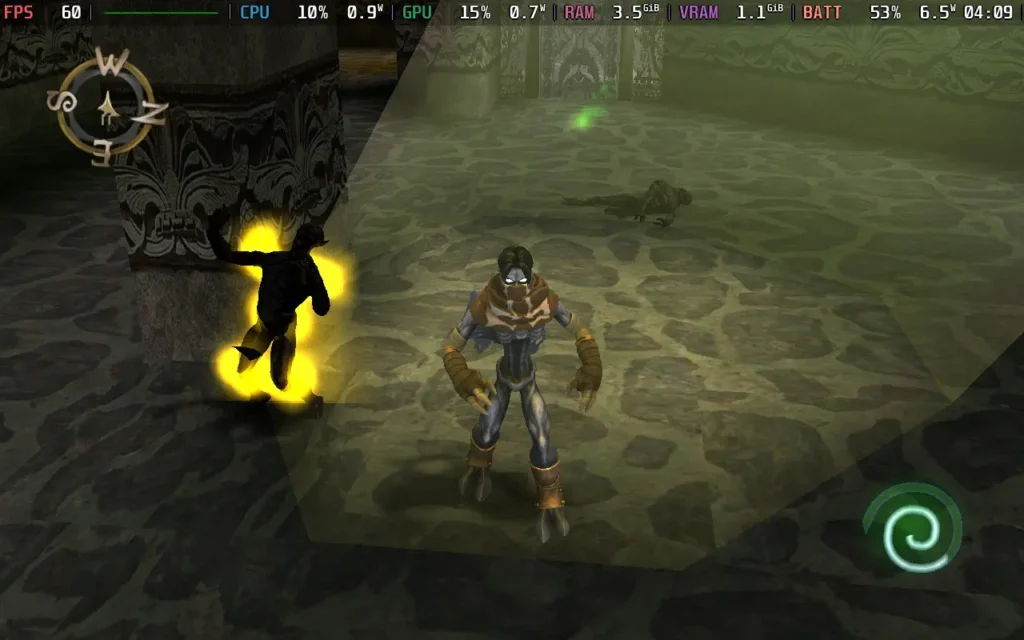
There is also some puzzle-solving, but it usually involves pushing a crate or some other object to a specific place so you can either access a new area or activate a mechanism to access a new area. You might be scratching your head at first, but once you get the hang of it, you'll start recognizing what the game wants you to do in certain places.
The biggest puzzle I found in both games is where to go! The world design is quite akin to a 3D Metroidvania, with various interconnected areas that you can end up looping around and going back through, and that's pretty cool, but it can also lead to some confusion. Both games have a map that lets you see key points, but those areas can be quite big, and there's no local map, so if you've taken a break, it can be a little confusing figuring out which way is forward and which is backward. Fortunately, the second game is a little more linear and easier to follow, but the first game is quite maze-like.
The games allow you to switch between your physical and spectral state to explore the same area in the two worlds and progress. Unfortunately, it doesn't always do a great job of communicating when that's necessary. I often kept forgetting to change, and you can't always change whenever you wish, so it can be a bit of a headache.
The first game also has portals for fast travel, where you choose a symbol representing a place to go to, which means checking the map and then memorizing the correct symbol for the area you want to teleport to and keeping it in mind. At the same time, you scroll through the painfully slow portal selector. This whole thing could have been solved by showing the actual name of the portal you're teleporting to on the screen.
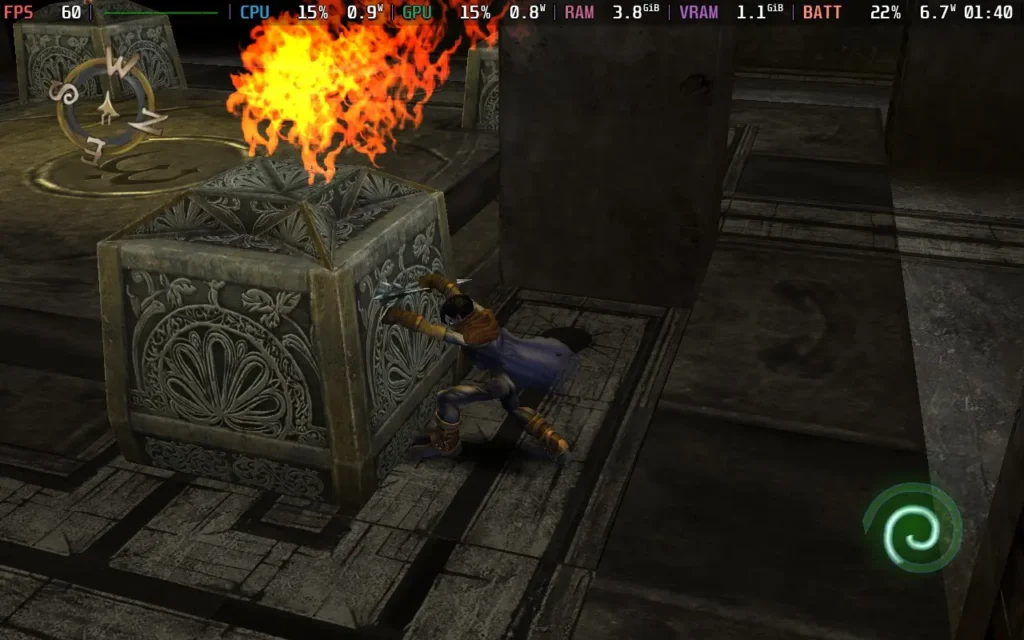
It may sound like I hate Legacy of Kain: Soul Reaver 1 & 2 Remastered, but I think these games are quite enjoyable. If you have played these games in the past, then the remasters are a good way to experience them again.
It's just that not much has changed here. I don't think anything regarding coding/mechanics has changed; the slightly updated textures and smoother models are appreciated, and the price tag is reasonable for the two games that should provide you with at least 15 hours of gameplay each. It's not always easy to go back and play a game from the 1990s, and with me having no nostalgia for these games, Legacy of Kain: Soul Reaver hasn't aged tremendously well.
Legacy of Kain Soul Reaver 1 & 2 Remastered runs almost perfectly on the Steam Deck. The game fills the Steam Deck's display correctly, so there are no black bars to worry about. Controllers are fully supported, so there are no issues there either.
The main issue I found is that the map screen in Soul Reaver 1 was oddly zoomed in, meaning the edges of the screen were cut off. I would guess that this is an issue with the Steam Deck being a 16:10 display, and it doesn't harm the game's playability, but it's worth mentioning.
Set the SteamOS frame rate limit to 60 and a TDP Limit of 5W.
There are no graphical options in either game, so there's nothing to configure here. With the 5W TDP limit, you should have a constant 60 FPS throughout both games, with a slight traversal stutter on occasion.
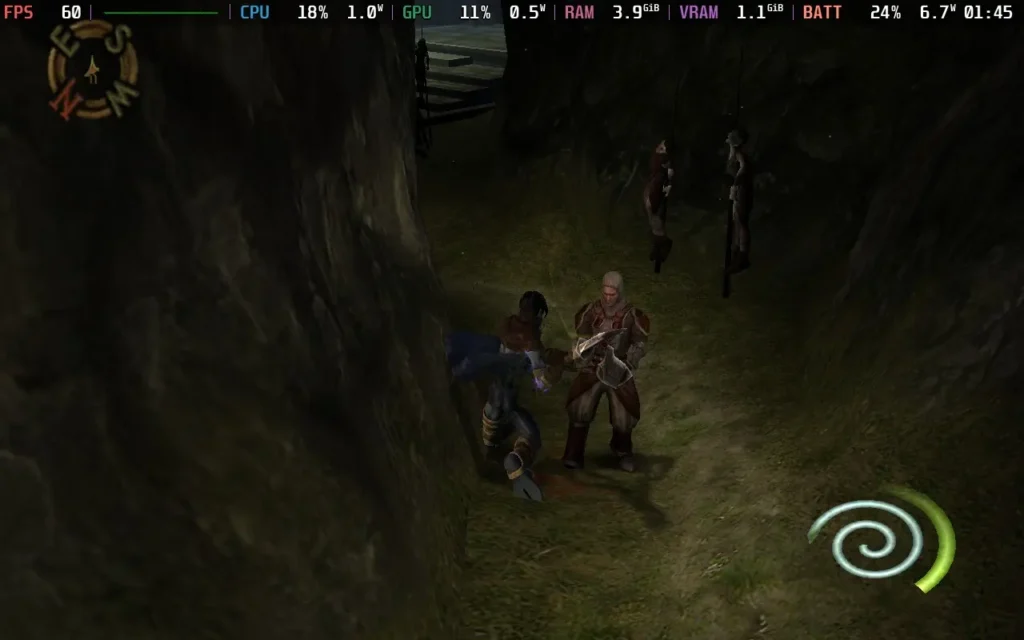
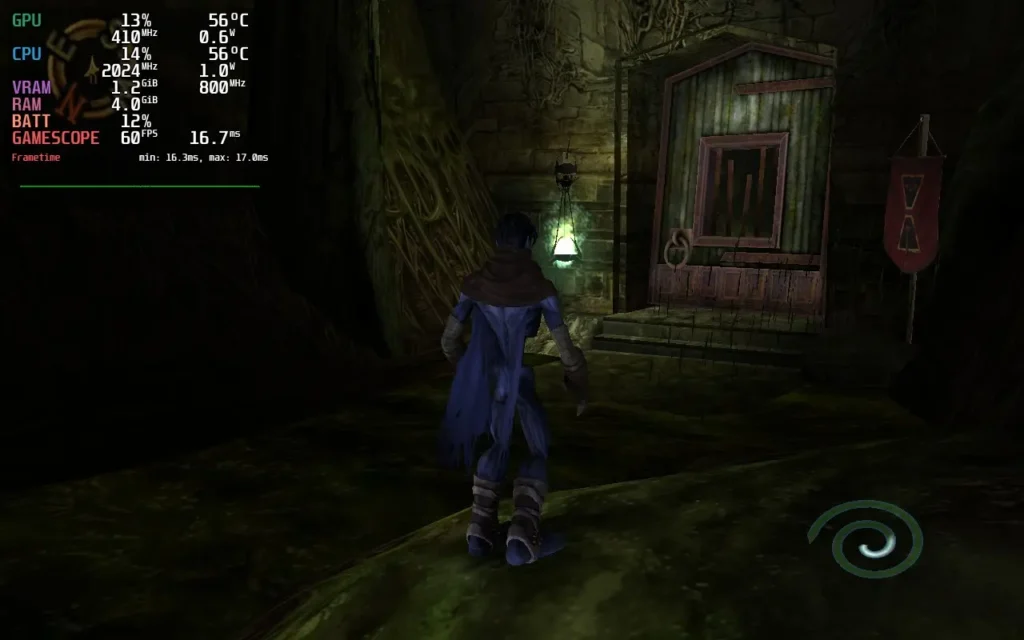
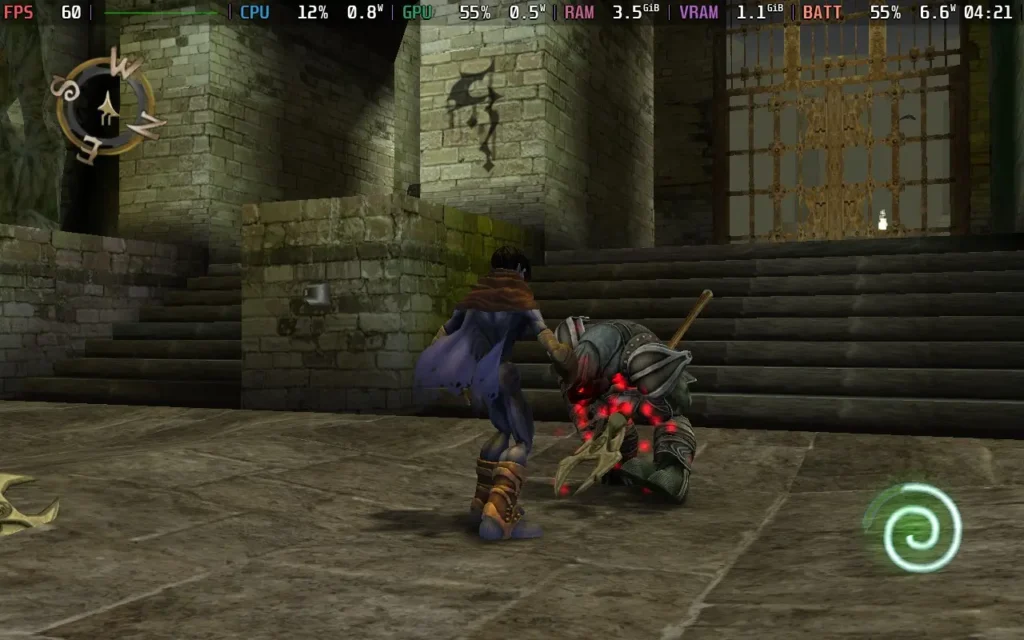
As you might expect, both games' power draw is incredibly low, around 6-7W in my playthrough. This means Steam Deck LCD owners should expect about 5 hours of battery life, whereas OLED users can expect a good 7 hours.
There was no fan noise, as expected, and temperatures stayed very low, not exceeding 60C.
The only accessibility options in these games are rebindable controls and subtitles for cutscenes.
The Legacy of Kain: Soul Reaver 1 & 2 Remasters should scratch that nostalgic itch you have for these games, but if you didn't play them when they were new, you might want to give these games a miss. They're products of their time and don't hold up too well with antiquated gameplay, lack of quality-of-life features we've come to expect nowadays, and visuals that still belong 20 years ago.
However, the games perform flawlessly on the Steam Deck. They require very little power draw to achieve 60 FPS and have good controller support. The only flaw I found was that the map is too far zoomed in on the first game's map screen, but aside from that, everything works as you would hope.
Our review is based on the PC version of this game.
If you enjoyed this review, be sure to check out the rest of the content on SteamDeckHQ! We have a wide variety of game reviews and news that are sure to help your gaming experience. Whether you're looking for news, tips and tutorials, game settings and reviews, or just want to stay up-to-date on the latest trends, we've got your back.
The Legacy of Kain: Soul Reaver Remasters might not be my cup of tea, but they work flawlessly on the Steam Deck.
